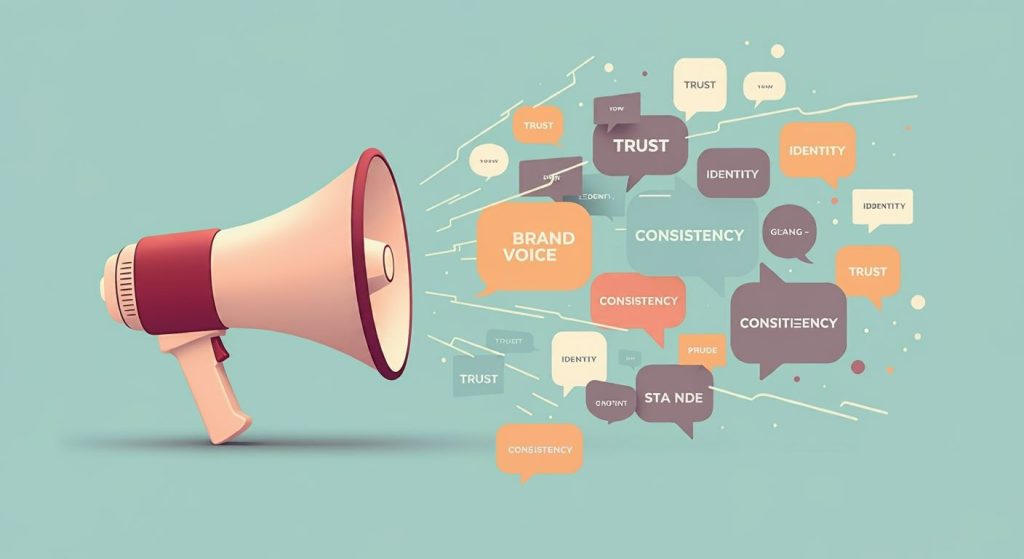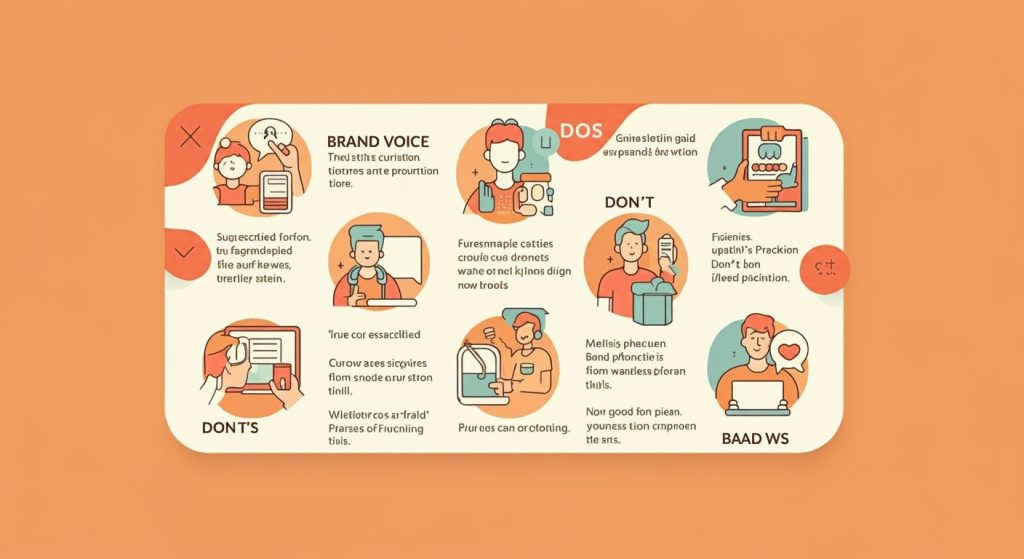Introduction: Why Brand Voice Matters
In a competitive market saturated with choices, establishing a unique identity is more important than ever. A brand voice is the consistent personality and tone that defines how your brand communicates with its audience. It reflects the values, beliefs, and purpose of your business. Think of it as the emotional and linguistic glue that binds all your customer-facing messages.
Creating a cohesive brand voice builds trust, fosters loyalty, and ensures that your messaging resonates with your target audience. Without a clear voice, your content risks sounding disjointed, making it harder for customers to connect emotionally with your brand. This article dives deep into what a brand voice is, why it’s crucial, and how to develop one effectively.

Table of contents
What Is a Brand Voice?

A brand voice is not just about the words a company uses; it encompasses the tone, style, and emotion conveyed through all forms of communication. It’s how your brand speaks to customers and reflects your business’s personality across all touchpoints, from social media posts to email marketing campaigns.
A successful brand voice helps customers instantly recognize your brand. It involves both tone (how the message feels) and style (how the message is presented). For instance, a tech startup targeting millennials might adopt a casual, witty voice, while a healthcare company would likely favor a compassionate and professional tone.
Developing a brand voice involves understanding your company’s core mission and audience preferences. This ensures that every interaction, whether it’s a tweet or a customer service email, feels authentic and aligned with your values.
Why Is a Strong Brand Voice Important?

A well-defined brand voice does more than just enhance communication—it strengthens your brand’s identity, builds customer trust, and differentiates you from competitors. Here’s why a strong brand voice is crucial:
- Consistency Across Platforms: Customers interact with brands on multiple platforms. A cohesive voice ensures that whether they’re reading your blog or watching your ad, the message feels familiar and trustworthy.
- Emotional Connection: Consumers gravitate toward brands they relate to emotionally. A distinct voice fosters this connection, encouraging loyalty and advocacy.
- Brand Recognition: Just as a logo visually identifies a brand, the voice serves as its auditory or written equivalent. A unique voice makes your content instantly recognizable.
- Clear Messaging: A consistent voice eliminates confusion, making it easier for your audience to understand and engage with your message.
Brands like Apple, Nike, and Wendy’s excel because their voices are unmistakably aligned with their identities and customer expectations.
How to Develop a Brand Voice

Creating a compelling brand voice is a step-by-step process. Here’s how to do it effectively:
1. Define Your Brand’s Core Values
Start by identifying the principles and beliefs that drive your brand. Ask questions like:
- What does our brand stand for?
- What emotions do we want to evoke in our audience?
2. Understand Your Target Audience
Conduct research to uncover your audience’s preferences, behaviors, and communication styles. Knowing who you’re speaking to ensures your voice resonates with them.
3. Audit Your Current Content
Review existing content to identify patterns in tone and style. Highlight what works and what doesn’t, ensuring your future voice is consistent.
4. Create a Brand Voice Guide
Document your brand’s tone, preferred language, and examples of voice in different scenarios. This guide serves as a reference for all team members.
5. Test and Refine
Your brand voice may evolve over time. Gather feedback and tweak as necessary to ensure it stays relevant and authentic.
Adapting Your Brand Voice for Different Contexts

While consistency is crucial, it’s equally important to adapt your voice based on context without losing your brand identity. Here’s how:
- Social Media: A lighter, more engaging tone works well for platforms like Instagram or Twitter.
- Customer Service: Maintain professionalism and empathy to resolve issues effectively.
- Corporate Communications: Use a formal tone that aligns with the brand’s credibility and authority.
Adapting the tone to fit the medium ensures your brand remains versatile yet recognizable.
Examples of Exceptional Brand Voices

Let’s examine brands that have mastered their voice:
- Nike: Empowering and motivational, appealing to the ambitious and athletic.
- Dove: Empathetic and inclusive, focusing on body positivity and self-esteem.
- Wendy’s: Bold and witty, particularly on social media, engaging younger audiences.
- Tesla: Visionary and futuristic, reflecting innovation and sustainability.
These brands are proof that a powerful brand voice can create a lasting impression.
The Role of Visuals in Reinforcing Brand Voice

While the written word conveys tone, visuals play an equally significant role. A brand’s design, color scheme, and imagery should complement its voice. For example, a luxury brand might use minimalistic design and muted tones, while a youthful brand would lean toward vibrant visuals and playful fonts.
Consistency between your brand’s voice and visuals ensures a cohesive customer experience.
Common Mistakes in Defining Brand Voice

Avoid these pitfalls when developing your brand voice:
- Inconsistency: Switching tones across platforms confuses your audience.
- Overcomplication: Using overly complex language alienates readers.
- Ignoring Audience Feedback: Dismissing feedback risks making your voice irrelevant.
- Lack of Documentation: Without a clear guide, maintaining a consistent voice becomes challenging.
Recognizing these mistakes helps ensure your brand voice remains effective and impactful. Also read branding tips for african startups.
Conclusion: Building a Voice That Resonates
Your brand voice is a powerful tool that communicates your identity and values to your audience. By defining and consistently implementing it, you can create a lasting impression, foster trust, and differentiate your brand in the market. Remember, your brand voice isn’t static—it should evolve alongside your audience and business goals.
Start developing your brand voice today, and watch as your business communication becomes more authentic, memorable, and effective.

